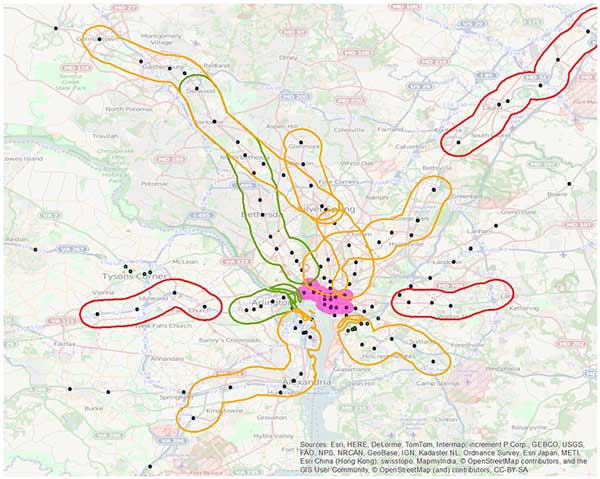How to Create Livable Transit Corridors
Integrated Corridor Case Study: WMATA and Arlington County, Virginia’s Orange Line Corridor
CFA’s livable transit corridor method provides a transformational tool that can yield results similar to metropolitan Washington D.C.’s Orange Line (Rosslyn-Ballston) case study. Comprehensive planning of this corridor began in the 1960s with a vision for an underground alignment with stations at key activity centers and across jurisdictional boundaries. Planning has succeeded in leveraging transit infrastructure by directing high-density development around station areas that put jobs, housing, retail destinations, and community services within walking distance of a single transit corridor. Over the ensuing decades, this vision has largely been realized, with the Arlington County’s Orange Line corridor successfully transitioning from being an Emerging to an Integrated Corridor.
CFA’s method helps you to build your own Integrated corridor using strategies successfully tested and developed in corridors around the country. Using transportation and land use integration, affordable housing, economic development and a host of other coordinated strategies, CFA’s methods will help you understand your corridor’s unique strengths and needs, develop consensus on a stakeholder vision, and implement the policies and projects that will make your vision come to life.

Research examined multiple corridors in the DC metro area. Performance varied. Integrated Corridors are outlined in green. Transitioning are outlined in yellow. Emerging Corridors are outlined in red.
